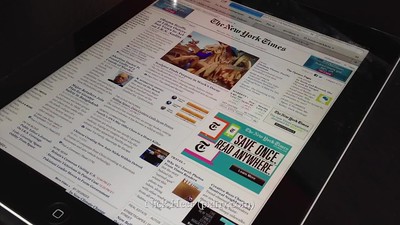Google held their long-ass opening keynote today, introducing a myriad of new products and refinements to existing ones. Most of these products are — as you’d expect — dependent on the use of Android and Google+ and the Google ecosystem, so they are less interesting to me. The improvements to speech recognition are amazing, but I’ve noted many times my disdain for speaking to my computer. Judging by my Twitter feed, many people are excited by their newfound ability to speak to Google, so it’s probably a personal issue.
There were some notable standouts, though. Maps received a massive overhaul, making for a beautiful product which is much more user-friendly than the current iteration. While I haven’t had significant issues with Apple’s mapping software for a long time, Google shows a significant advantage — particularly on the web.
Less nice is Google’s new multicolumn Google+ design. Lead designer Fred Gilbert explained in a profile with GigaOm’s Om Malik:
Gilbert explained that when Google started working on the new look, the idea was to take a lot of information and show it in as simple a manner, giving the eye the visual cues to understand the importance of content. Bigger photos, for instance are indicative of their importance. Photos become bigger based on analysis of past relationships to the people and the content and their ensuing interactions, Gilbert explained.
This seems clever, until you actually use the product. The multicolumn layout creates clutter, making it difficult to navigate, read, or interact with content.
Facebook attempted a two-column interpretation of profiles last year which they called “Timeline”. Coincidentally, Facebook just finished migrating all user profiles to a single-column version of Timeline yesterday. There’s a very good reason why they reverted: time is linear. A single column in reverse chronological order is a natural way of organizing data that is updated over time.
The other standout product was the launch of Google’s Spotify and Rdio competitor. Dubbed “All Access”, the service costs $10 per month, and is available only for Android users in the United States. Google did not announce which labels had signed with the product, nor a rollout timeline for other countries or platforms. The price point is the same as both Rdio and Spotify, both of which are available in plenty of countries outside of the US and have much larger music catalogues. It’s hard to see why anyone would choose All Access over the other two products.
All of this is without mentioning Larry Page’s bizarre question and answer period following the nearly three hour long keynote. From The Verge’s liveblog:
It is really hard to explain this experience. Larry is just quietly riffing on the future of computers and the world, and this giant room with 6000 people in it is pin-drop silent.
Gruelling.
